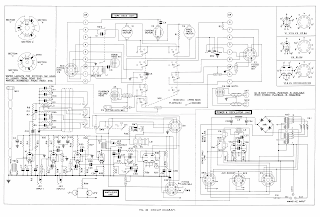Jorinde Voigt
Jorinde Voigt
Recently Voigt has begun to add more colour and cuts into her papers, as well as adding cutout shapes, allowing her to build a further layer of associations into the images.
Jorinde Voigt
In the image above it is much easier to see the influence of musical notation on her drawing and the image below is of a more recent drawing with colour inserts. You could think of these drawings as conceptual abstraction. She is trying to in effect develop a visual score that is a personal notation of her responses to situations.
Jorinde Voigt
Jorinde Voigt 1
Jorinde Voigt 2
Jorinde Voigt 3
Find examples of experimental musical notation here.
If interested in this area of drawing and musical notation there are useful links in my earlier post on Eye Music.
Compare her drawings with those of Daniel Libeskind.
Diagram of electrical circuitry
The diagram of electrical circuitry above points to the fact that what Voigt is doing is something that is common to any activity or way of thinking that needs to focus on one thing at a time in order to understand what's going on. If an electrical engineer became distracted by anything else except the electrical circuit, he or she would begin to lose track of what is already a complexity that most of us could not follow. A diagram allows us to abstract out of the world's infinite complexity a particular aspect that we are interested in. The art is in the invention of a language that helps to explain what is happening.
John Coltrane. Untitled (circle of fifths), 1967
See also:






Wow... Amazing art
ReplyDeleteHow to pass Nebosh IGC3
Nebosh IGC Registration
IOSH MS course in Chennai
Nebosh Course in Chennai
Safety Courses in India